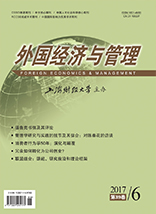Nowadays, brand globalization is the route multinational enterprises must take to enter the international market and establish global brands. Many scholars have investigated how multinational enterprises gain competitive advantages in the global market and most of them focus on the material strategy studies. Few studies, however, have explored the rhetorical strategy of brand globalization, especially for emerging market companies. It is urgent to lessen the liability of foreignness and to reduce the prejudices of host country consumers by effective rhetorical strategies. Drawing from social movement theory with a social constructive perspective, this paper analyzes multiple cases of Lenovo, Samsung, LG and Starbucks, and constructs a brand international communication strategy model, which can reduce the liability of foreignness from two aspects: (1) to build rhetorical frames through amplification strategy, extension strategy and bridging strategy; (2) the rhetorical frames influence the consumers through the resonance of credibility, consistency and commensurability. This paper extends the research of transnational brand communication strategies, and enlarges the application of social movement theory in the marketing field. These findings may provide a reference for multinational companies to formulate communication strategy in transnational marketing, especially for emerging market companies.
 / Journals / Foreign Economics & Management
/ Journals / Foreign Economics & ManagementForeign Economics & Management
JIN Yuying, Editor-in-Chief
ZhengChunrong, Vice Executive Editor-in-Chief
YinHuifang HeXiaogang LiuJianguo, Vice Editor-in-Chief
How to Achieve Effective Communication in Brand Globalization: A Multi-case Study Based on Social Movement Theory
Foreign Economics & Management Vol. 39, Issue 06, pp. 39 - 53 (2017) DOI:10.16538/j.cnki.fem.2017.06.004
Abstract
References
Abstract
Cite this article
Wang Tao, Wang Yuanfu, Huang Jing. How to Achieve Effective Communication in Brand Globalization: A Multi-case Study Based on Social Movement Theory[J]. Foreign Economics & Management, 2017, 39(6): 39–53.
Export Citations as:
For
ISSUE COVER
RELATED ARTICLES




 , 2
, 2 9565
9565  18700
18700

